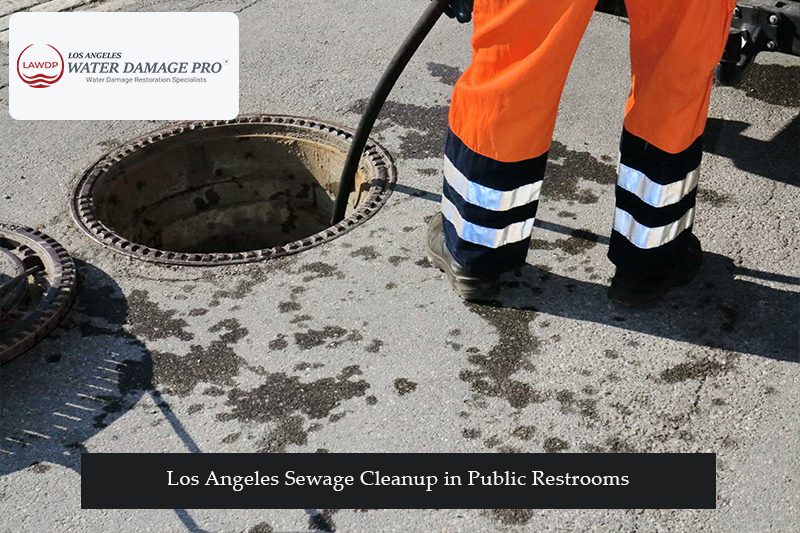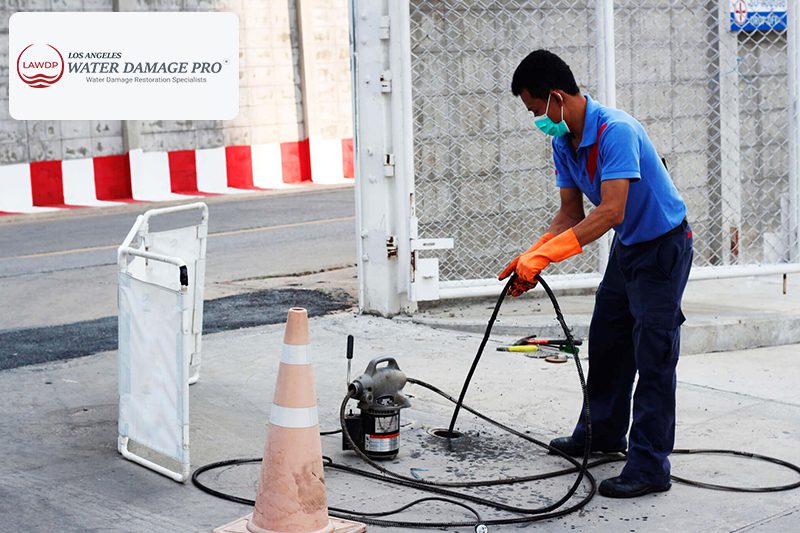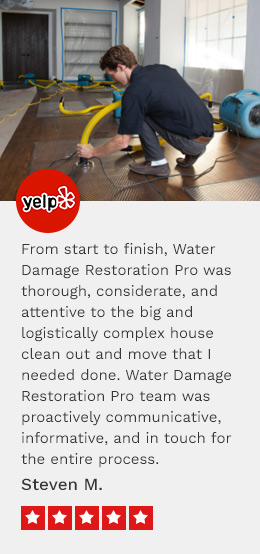Sewage Cleanup in Public Restrooms
Immediate and professional resolution regarding Sewage Cleanup in Public Restrooms is paramount. Whether caused by pipe obstructions, system malfunctions, or unforeseen calamities, sewage spills or backups incidents require immediate attention. These occurrences pose significant health risks and disrupt restroom users’ daily routines and comfort.

Amidst this challenge, Water Damage Restoration Pro emerges as the beacon of expertise dedicated to restoring a safe and hygienic environment for users of public restrooms. Our team evaluates the extent of the damage, devises a customized strategy, and efficiently executes the cleanup process to mitigate disturbances and reinstate a sense of normalcy.
What Is A Public Restroom Sewage Cleanup?
A public restroom sewage cleanup refers to cleaning up and removing sewage overflowing or leaking in a public restroom. Sewage backup can occur for various reasons, such as clogged or damaged pipes, heavy rainfall, or a malfunctioning septic system.
Types of Public Restrooms Sewage Backup Cleanup
| Types of Public Restrooms | Public Restrooms Sewage Backup Cleanup |
| Standard Public Restrooms | In standard public restrooms, the sewage cleanup process involves isolating the affected area, closing off the affected stalls, and removing any standing sewage. The contaminated materials are safely disposed of, and the area is thoroughly cleaned and disinfected using specialized equipment and cleaning agents. The process may involve temporarily closing the restroom to ensure the safety of users during the cleanup. |
| Family or All-Gender Restrooms | For family or all-gender restrooms, the sewage cleanup process focuses on maintaining the privacy and accommodating different users. The affected area is isolated, and sewage is removed and disposed of properly. Extra care is taken to ensure the privacy of individuals using the restroom during the cleanup. Temporary alternative restroom arrangements may be made to minimize inconvenience for families or users with specific needs. |
| Accessible Restrooms | For inaccessible restrooms, the sewage cleanup process prioritizes maintaining the functionality and accessibility of the facilities. The affected area is cordoned off, and any sewage is carefully removed and disposed of. Special attention is given to cleaning and sanitizing the wheelchair-accessible stalls, ensuring that grab bars and other accessibility features are thoroughly disinfected to maintain a safe and hygienic environment for individuals with disabilities. |
| Outdoor Restrooms | The sewage cleanup process for outdoor restrooms adapts to the unique challenges posed by the environment. The affected area is isolated, and any portable toilets or fixtures are carefully emptied and cleaned. The cleanup team ensures that the surrounding outdoor space is sanitized correctly to minimize environmental impact. Additional measures may be taken to prevent further contamination, such as covering or replacing affected soil or surfaces. |
| Mobile Restrooms | The affected mobile unit is taken out of service for mobile restrooms, and the sewage is safely removed and disposed of by environmental regulations. Thorough cleaning and disinfection of the unit are conducted, including replacing any necessary components or parts. Once the cleanup is complete, the mobile restroom will be available at its new location. |
Public Restrooms Sewage Cleanup Insurance Claims
Need help navigating the complexities of Los Angeles public restroom sewage cleanup insurance claims. Water Damage Restoration Pro is dedicated to assisting clients with public restroom cleanup insurance claims and providing a streamlined and efficient process while navigating insurance procedures for restoration services.
Our experienced team works closely with insurance adjusters to ensure that all necessary documentation is provided and all requirements are met to expedite the claims process. We document all the damages and give an accurate estimate of the cost of repairs and cleanup. Our goal is to maximize your insurance coverage and minimize your out-of-pocket expenses.

Emergency Public Restroom Cleanup Services
Regarding emergency public restroom sewage cleanup services in Los Angeles, you can rely on Water Damage Restoration Pro to provide swift and reliable assistance. Our dedicated team understands the urgency of restoring cleanliness and safety in public restrooms, so we offer a 24/7 emergency response service.
We are ready to mobilize quickly to your location and are equipped with the necessary tools and expertise to handle any public restroom cleanup situation. We prioritize the health and well-being of restroom users and strive to minimize disruptions to your operations, restoring normalcy as soon as possible.
Call Us at Water Damage Restoration Pro
Keep public restroom sewage issues from disrupting your operations or compromising the health and safety of your users. Trust the expertise of Water Damage Restoration Pro to swiftly and effectively handle the cleanup. Contact us and let our dedicated team restore cleanliness and safety, ensuring a hygienic environment. With our reliable services, you can know that your public restrooms are in capable hands.
FAQs
Sewage backups can occur for various reasons, including pipe obstructions, system malfunctions, tree root intrusions, heavy rainfall, or improper waste disposal.
Our team strives to minimize disruptions by working efficiently while ensuring the safety and comfort of restroom users. Temporary closure or alternative arrangements may be considered if necessary.
Signs of a sewage backup may include foul odors, slow-draining sinks or toilets, gurgling sounds from drains, water pooling around fixtures, or sewage coming up through drains.
Professionals utilize thorough cleaning and deodorization techniques to eliminate odors, leaving the restroom smelling fresh and clean.
Yes, neglecting to clean up sewage backups properly can lead to ongoing hygiene issues, persistent odors, mold growth, structural damage, and continued health risks for restroom users.


